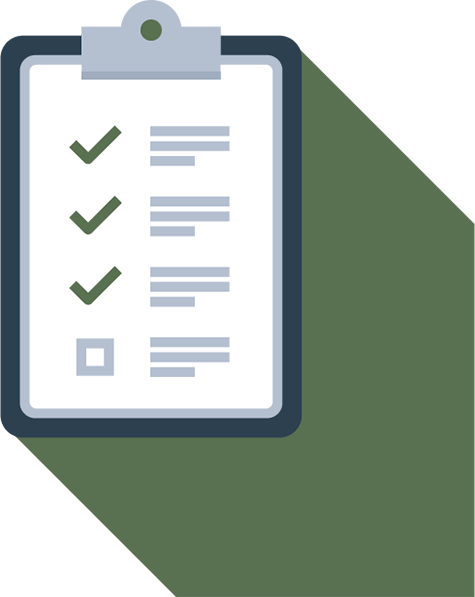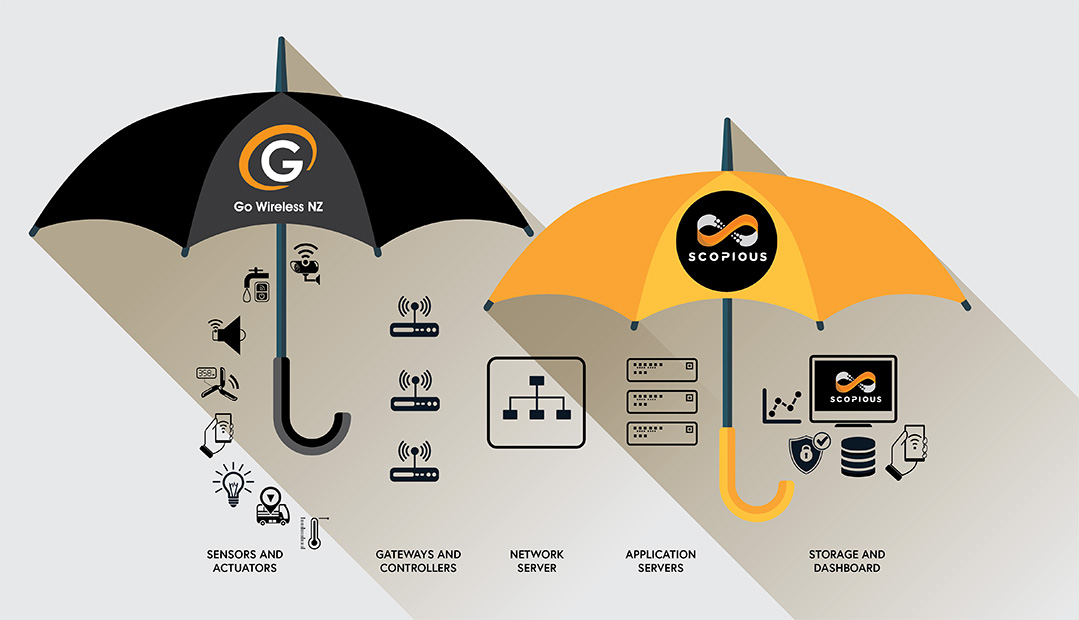Building a IoT network can be overwhelming, but with a key objective/goal in mind and the right tools and support, you can make your idea come to life.
The IoT Hardware Toolkit
In your network toolkit, you will typically have Sensors and Actuators (to collect data and activate things), Controllers (to combine and process the data from the sensors and control the actuators) and Gateways (to provide coverage to your sensors and connect to the internet so data can be passed data back and forth to the application). You will also need to be able to view and manage your data; that is where Scopious excels.
Industry Network Examples
Manufacturing
Healthcare
Transportation
Energy
Retail
Agriculture
Electronics

Of senior business leaders plan to use IoT in the next 3 years.

Only 7% have a comprehensive strategy for IoT.
Do it once, do it right.
The scale of a typical IT network is on the order of several hundred devices—typically printers, mobile wireless devices, laptops, servers, and so on. But when a network scale goes from a few hundred endpoints to hundreds of thousands, the IT engineers lack the required skills to design a network to support millions of routable IP endpoints.
The frequency and impact of cyber attacks in recent years have increased dramatically. Protecting corporate data from intrusion and theft is one of the main functions of the IT department.
IoT systems require consistent mechanisms of authentication, encryption, and intrusion prevention techniques that understand the behaviour of industrial protocols and can respond to attacks on critical infrastructure.
For optimum security, IoT systems must:
Identify and authenticate all entities involved in the IoT service (i.e., gateways, endpoint devices, home networks, roaming networks, and service platforms).
Ensure all user data shared between the endpoint device and back-end applications is encrypted.
Most IoT sensors are designed for a single job and are typically small and inexpensive. This means they often have limited power, CPU, and memory and transmit only when something important happens.
If an IT network has performance constraints, the solution is simple: Upgrade to a faster network.
With IoT, if too many devices are in one location and impacting performance, we can add more capacity to scale as much as we need.
IoT devices generate a mountain of data. In general, most IT shops don’t care much about the unstructured chatty data generated by devices on the network. However, in IoT, the data is like gold, enabling businesses to deliver new IoT services that enhance the customer experience, reduce cost, and provide new revenue opportunities.
Although most IoT-generated data is unstructured, the insights it provides through analytics can revolutionise processes and create new business models.
For example: Imagine a smart city with a few hundred thousand smart streetlights connected through an IoT network.
Without the proper tools, however, when all this data is combined, it can become difficult to manage and analyse effectively and challenging to identify needed solutions.
Supporting legacy devices in an IT organisation is not usually a big problem. If someone’s computer or operating system is outdated, they upgrade. If someone uses a mobile device with an outdated Wi-Fi standard, such as 802.11b or 802.11g, we can deny them access to the wireless network, and they will be forced to upgrade.
In IoT systems, end devices will likely be on the network for a long time—sometimes decades.
As IoT networks are deployed, they need to support the older devices already present on the network and devices with new capabilities.
What to connect, where to connect, how much data to transport at what interval and over what distance.
What do you need?
This classification is based on whether the object carries its own energy supply or receives continuous power from an external power source.
Batteries limit the lifetime and amount of energy that the object is allowed to consume, thus driving transmission range and frequency
This classification is based on whether the “thing” should move or always stay at the same location.
A sensor may be mobile because it is moved from one location to another or because it is attached to a moving object.
The frequency of the movement may also vary, from occasional to permanent.
This classification is based on how often the object should report monitored parameters.
A rust sensor may report values once a month.
A motion sensor may report acceleration several hundred times per second.
Higher reporting intervals drive higher energy consumption
This classification is based on the quantity of data exchanged at each report cycle.
A humidity sensor in a field may report a simple daily index
While an engine sensor may report hundreds of parameters, from temperature to pressure, gas velocity etc.
Richer data typically drives higher power consumption.
This classification is based on a combination of; sensor capabilities, the number of smart objects over a given area, transmit power, antenna gain, obstructions and the height and distance between the smart objects and where the gateway is located.
This classification is based on the number of smart objects over a given area connected to the same point of access.

Data collected from an object may need to be forwarded to a server where data is processed.
One key parameter determining the choice of access technology is the range between the object and the Gateway.


Find your local WISP Here
If operating on a public LoRaWAN network does not meet your requirements, then contact us today and we can discuss with you how setting up your own private LoRaWAN network may be better suited to your needs. Scopious offers various services to help you, from consulting through to a managed network service.

Scopious - The intuitive IoT platform bridging the gap between connected devices and actionable insights; changing the way you view the world.
With seamless integration of LoRaWAN technology, Scopious empowers businesses to deploy, monitor, and scale their IoT solutions with ease. By offering real-time analytics, robust data security, and adaptive scalability, Scopious IoT transforms raw data into intelligent decision-making, helping organisations optimise operations, reduce costs, and drive innovation. Whether you're managing smart cities, industrial automation, or environmental monitoring, Scopious IoT delivers reliability and precision to bring your vision to life.
The Scopious brand is founded by Director of Go Wireless NZ Ltd, a well respected New Zealand Distributor of trusted wireless hardware and accessories so you are backed by the same experienced, expertise.
Leave your number and we will get in touch, your first hour is free!